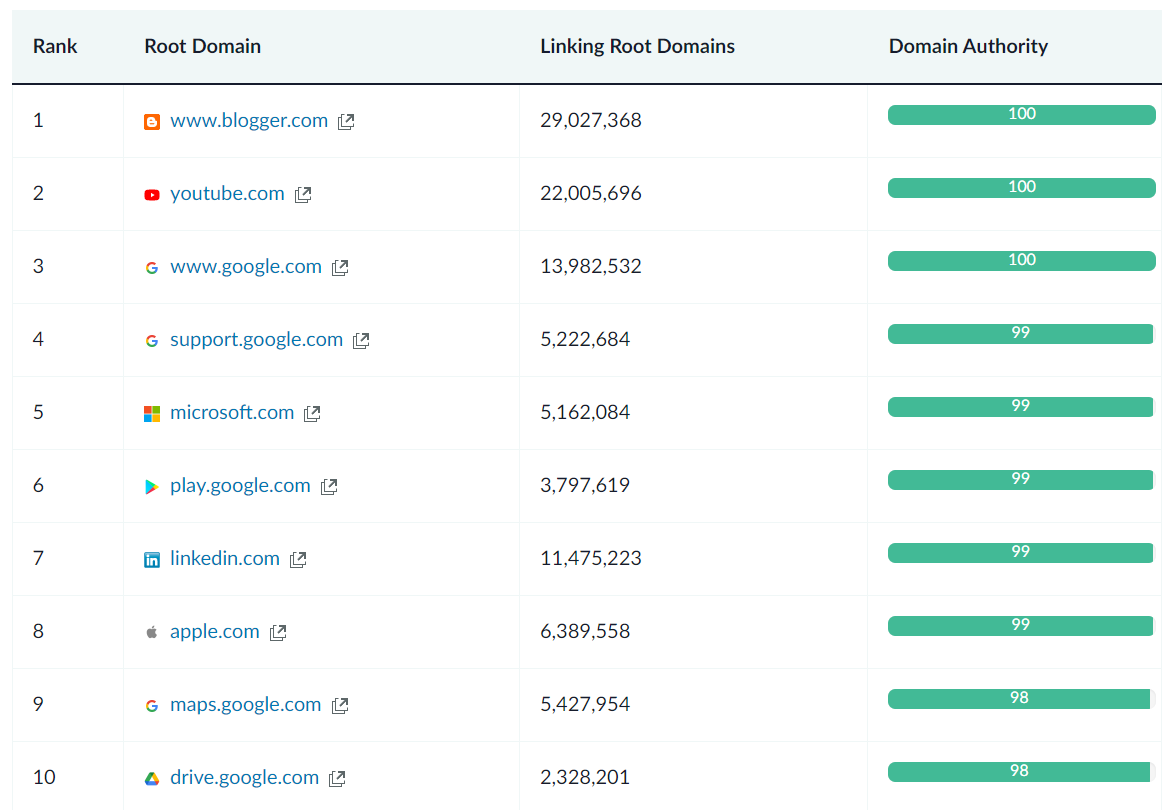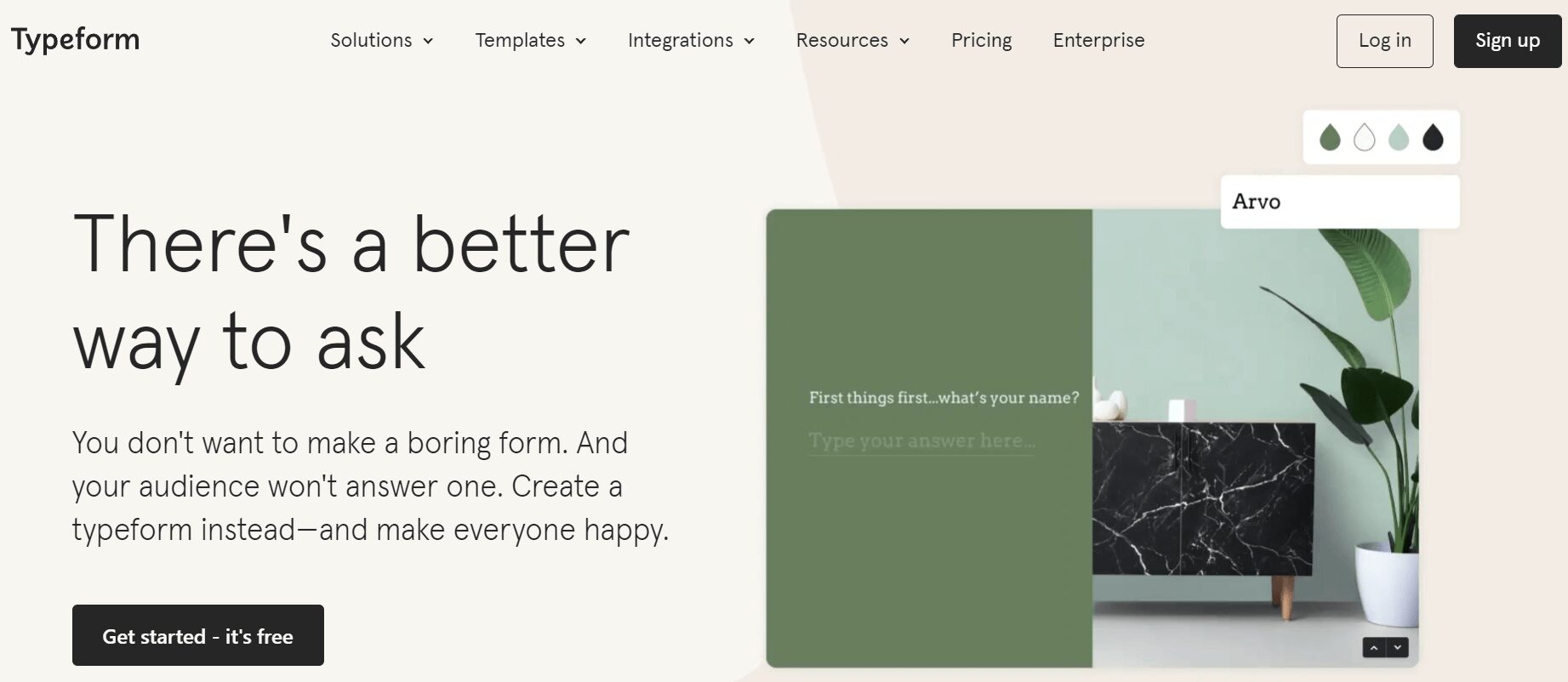Finding the best domain names is rarely easy. Your business might have the perfect name, but that domain might not be available unless you use a lesser-known Top-Level Domain (TLD). If you’re coming up with a company name from scratch, it also needs to be available for you to choose as a domain. This article will provide you with actionable tips to help you pick the best domain names. We’ll cover everything from how to find alternatives if your original choice isn’t available to what TLDs to use. Let’s get to it!
1. Opt for a .com Domain Whenever Possible
If you already have a domain name in mind and you find it available with multiple TLDs, .com should always be your first option:

There are no technical differences between different TLDs. However, research shows that .com domain names are more memorable and rank higher for trustworthiness.
If you look at the numbers, 53.1 percent of all ranked domains in search engines use .com TLDs. That’s because many of those sites have been around for a while. In other words, they’re “aged” domains.
Search engines give older websites and domains more weight because they’re considered more trustworthy. Simply registering a .com domain doesn’t mean your site will rank instantly. However, it can matter to user perception.
As other TLDs gain popularity, they are considered viable options alongside .com. However, if you find the name you want and the .com option is available to register immediately, there’s no reason not to go for it.
2. Consider TLDs Beyond .com in Specific Situations
If you’re 100 percent sure about your domain name and it’s not available as a .com, it’s time to consider other TLDs. There are hundreds of TLDs available, so choosing the right one can be challenging.
As a rule of thumb, you want to avoid “gimmicky” TLDs, such as .ninja or .pizza. They can be fun, but they can also confuse a large segment of your audience.

Plus, non-conventional TLDs might give visitors the idea your site isn’t serious or trustworthy. With that in mind, there are several fantastic TLD options that you can use if .com isn’t available. The extensions we recommend include:
- .blog: If you’re working on a site that focuses on written content, the .blog TLD is a safe choice.
- .co: The TLD for Colombia has gained notoriety as an alternative to .com. It’s pretty similar and easy to remember. However, you risk confusing visitors with .co versus .com.
- .io: This TLD is a popular option for tech-related businesses.
- .net: Although it’s not as popular as it once was, .net remains a great choice if you’re looking for a .com alternative that appears trustworthy.
- .org: In theory, this TLD is for non-profit organizations. However, it’s become popular among all types of websites. It’s also one of the most recognizable domain extensions that you can use.
If the domain name you want isn’t available with any of those TLD alternatives, it’s time to return to the drawing board. It’s far better to spend time coming up with new names than opting for a TLD that confuses more visitors than it attracts.
3. Consider Potential Domains While Coming Up With Business Names
Considering potential domain names when starting a business wouldn’t have made much sense a couple of decades ago. That’s because the website came after the company was already up and running. Online-first operations weren’t all that common yet.
These days, it’s logical to think about the online arm of your business from the very start of the planning process. Every business needs an online presence that includes a website and probably social media. And for professional email accounts.
When coming up with potential business names, verify if they’re available as domains (and if the .com TLDs are up for grabs). If they’re not, try using combinations with helper words (such as the or my) and note which domain names you can register.
Figuring out a great business name only to discover that it’s not available as a domain can be a big blow. We also recommend going the extra mile and seeing if your favorite domain names are also available as social media handles. The social media aspect of choosing a domain name isn’t as critical, but it’s worth considering.
However, it’s not uncommon to see brands with social media handles that don’t match their domain and business names. When you are able to match them up, though, it can greatly help with brand cohesion.
4. Circumvent Taken Names Using “Helper” Words
One of the most common challenges in finding a domain name is that most “popular” words and common combinations are already taken. If you’re hoping to register a domain name such as travel.com, you better be ready to dig deep into your pockets, assuming the owners even want to negotiate.
If you have a great domain name in mind but it’s not available, your next step should be to look for helper word combinations. While not as simple and memorable as a short, single-word URL, the addition of a helper word does open up marketing campaign opportunities.
Some great examples of domains with helper words include:
- steampowered.com: Since Steam.com was already taken, the online game distribution platform added an extra word to avoid dealing with scalpers.
- getflywheel.com: This managed WordPress hosting company is called Flywheel. Since another business already took that domain name, Flywheel complemented it with an actionable helper word.
- gotravel.com: This domain name belongs to a regular travel agency. Instead of negotiating a massive buyout for travel.com, the business simply chose a similar option that incorporates the company name.
- tryshift.com: This email management app is called Shift because it enables you to shift between email accounts with a few clicks. As you can imagine, shift.com was already taken, so the company added try to get a domain name that remains short and actionable.
Helper words are your best allies when registering popular domain names. Almost anything can be a helper word, but we recommend sticking with elements related to the original business name.
On that same note, using an action word within your domain name (such as get or try) can act as a Call-to-Action (CTA) before users even visit your site.
5. Don’t Be Afraid to Abbreviate
Many of the most popular websites use abbreviations in their domains. Two well-known examples include:
- amazonaws.com: AWS stands for Amazon Web Services. As a standalone domain, amazonwebservices.com sounds a bit awkward. By abbreviating the AWS component, the domain remains short and well branded.
- nytimes.com: The New York Times is one of the best-known publications globally, and NY is a common abbreviation for the city. That means the company can use the shortened version in its domain name.
Abbreviating part of your domain works best if you have a long business name (basically anything over two words). It’s best to keep domain names as short as possible so that they’re easier to remember and don’t take long to type.
That data holds true if you look at the most popular websites in the world. Almost all of the 100 most popular sites globally have domain names with two or three words.
Shorter domain names might not guarantee success, but they’re common for the most highly-ranked websites:

Source: Moz.com
While coming up with potential business names, consider possible abbreviations. One-word titles are ideal, but you may have to build a brand from scratch.
6. Test Potential Domain Names
Many of the most popular businesses worldwide use made-up words for their names. Companies such as Walmart, Toyota, and Google took unique words and built up their brands around them.
It’s a common trend for startups to utilize unique words as their names. Technically, you can use any made-up word as a business and a domain name. However, it can be hard to know if users and customers will like that word. (Such as with Netflix’s Quickster fiasco.)
Arguably, if your products and services are good enough, the name won’t matter that much. Over time, users will associate the products with the name, and that’s how your brand is born.
If you want to play it safe, your best bet is to “test” potential names before registering a business and a domain name. By testing a name, we mean:
- Ask friends and family what they think about the name. This method is the cheapest option, but you might not get accurate feedback due to personal relationships and biases.
- Use control testing groups. Some services will pool people from multiple walks of life to help you test-drive ideas and names. A panel can help determine how people feel about a potential business/domain name.
- Poll your social followers. If you have a base brand already, posting about your choices on your social media accounts can give you a sampling of how your existing userbase will feel about the new terminology.
Naturally, most people don’t have the funds to crowd-test and focus-group domain names before registering them. However, there are several tools that can help alleviate that strain, such as services like Typeform that let you build anonymous surveys and share them.

When testing potential domain names, it helps to have a list of questions ready. Instead of simply asking if users like the domain, see if they think it’s easy to remember and type. Additionally, ask if the name reminds people of competitors and what they associate the words with.
Conclusion
Coming up with a great domain name can be challenging. In a way, it’s as hard as choosing the perfect name for your business. The wrong choice doesn’t mean that your site won’t succeed. But it can definitely impact your brand and how users perceive it.
You do want to choose the best domain names possible, and we recommend that you start looking at availability while coming up with your business name itself. Every company needs a website from the get-go in today’s modern world. Therefore, it makes sense to do some research as early as possible. If you can snag the right domain at the right time, a lot of your marketing and branding work becomes much easier.
Do you have any questions about choosing a great domain name? Let’s talk about them in the comments section below!
Featured image via VectorsMarket / shutterstock.com
The post How to Choose the Best Domain Names for Your Business appeared first on Elegant Themes Blog.
